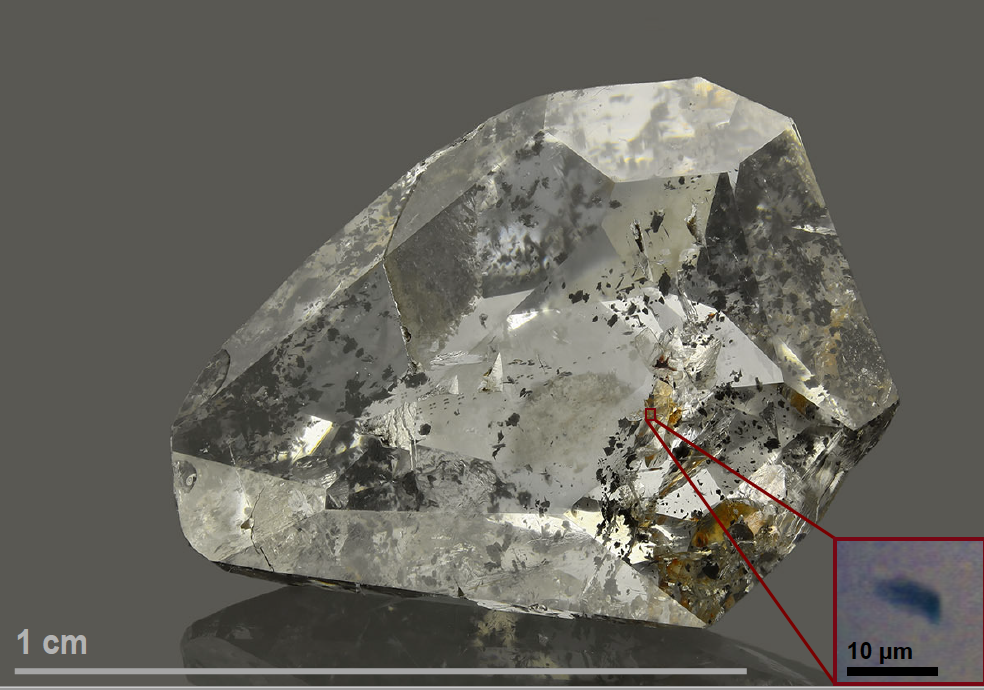Super-deep diamonds: a study coordinated by the Department of Geosciences led to important discoveries on the processes of the Earth's mantle

Diamonds are known as most popular precious stones. However, their value is inestimable not only in gemmology, but also in geology. In fact, diamonds are the only natural samples able to provide mineralogical and geochemical information about Earth’s interior, up to 800 km depth.
In detail, most information is not deduced by diamonds, being pure carbon minerals, but from mineral inclusions enclosed by diamonds. These inclusions represent “pieces” of minerals forming mantle rocks, entrapped by diamonds during their precipitation. In last decades, the study of inclusions has highlighted and demonstrated geodynamic processes occuring in our planet’s interior, which in some cases were only predicted by experiments. In particular, diamonds and their inclusions have provided important contributions in understanding carbon and other elements cycle within Earth’s interior.
A new study, carried out by some researchers of the Department of Geosciences of the University of Padua and recently published in Geology, has demonstrated for the first time as diamonds can also travel downward, at greater depths, within Earth’s mantle, and not only upward toward the surface carried by kimberlitic magmas. Considering the active geodynamics of our planet, this process could be assumed for people out of diamond field. However, this has never been demonstrated with scientific evidences so far.
This indicates, as the authors wrote in the abstract of the article, that “the commonly assumed view that diamonds form at, and capture material from, a specific mantle level and then travel upward is probably too simplistic”.
In detail, the downward movement of diamonds has been proven by the identification of a tiny multi-phase inclusion (~ 10 microns) within a 1.3 carats diamonds from Central African Republic. This inclusion consists of ringwoodite (γ-Mg2SiO4), tetragonal zirconia (ZrO2) and coesite (SiO2). Ringwoodite is the high-pressure polymorph of olivine (the most abundant mineral in upper mantle), stable at depths between ~ 525 and 660 km in the transition zone. This ringwoodite represents the second finding of this mineral within a natural diamond and indicates that its diamond host resided in the lower part of the transition zone at certain point of its history, where this mineral is stable. On the other hand, presence of tetragonal zirconia and coesite in contact each other suggests that these two mineral could derive from the transformation of a previous zircon (ZrSiO4) or reidite, the high-pressure polymorph of zircon. Experiments have demonstrated as zircon, increasing pressure conditions, would transform at depths of ~ 550 km in zirconia (ZrO2) + high-pressure silica (SiO2).
Considering also the association with ringwoodite, the analysed multi-phase inclusion can be interpreted as the prograde transformation, for pressure increasing, of a former inclusion composed by olivine/wadsleyite + zircon/reidite, entrapped by diamond at shallower depths. In detail, this diamond, after having enclosed the inclusion, travelled downward at depths up to 550-660 km, where the olivine/wadsleyite and zircon/reidite re-equilibrated in ringwoodite and high-pressure polymorphs of zirconia and silica. The olivine-zircon mineral association could appear unusual, as zircon is a typical accessory mineral in crustal rocks, such as granites. However, zircons have been also found in ultramafic mantle rocks and have been interpreted as metasomatic minerals or xenocrysts related to interactions between ultramafic mantle rocks and crust-derived fluids or melts. Consequently, the studied multi-phase inclusion has demonstrated for the first time as a diamond, after its formation, can also travel downward at greater depths in the mantle, probably following subduction, and not only upward toward shallower depths. This study opens new prospective about the interpretation of the data provided by inclusions within diamonds and it could have important implications on role of diamonds about the recycling of material at different depths in Earth’s mantle.
“It is incredible as a tiny inclusion, such as those studied, has been able to provide so important and detailed information about the “journey” of its diamond host within Earth’s mantle, demonstrating for the first time that diamonds probably can tell us more than what we think about the processes occurring in our planet’s interior”, commented Sofia Lorenzon, PhD student at the Department of Geosciences of the University of Padua and first author of the study.
From the Department of Geosciences the other authors of this research are Dr. Davide Novella, Prof. Fabrizio Nestola, Prof. Paolo Nimis e Dr. Martha G. Pamato.
In addition to the Department of Geosciences of the University of Padua, this study was carried out in collaboration with Dr. Emilie Thomassot from the “Centre de Recherches Pétrographiques et Géochimiques dell’Université de Lorraine” (Nancy, Frace), Prof. Steven D. Jacobsen from the Department of Earth and Planetary Sciences of the Northwestern University (Evanston, Illinois, USA), Prof. Frank Brenker from the Geoscience Institute of the Goethe University (Frankfurt, Germany), Dr. Loredana Prosperi from the Italian Gemmological Institute (Milan, Italy)and Prof. Matteo Alvaro from the Department of Earth and Environmental Sciences of the University of Pavia.





